Tourism
Sightseeing around Shanghai
Shanghai is the largest city in China, and one of the most populous cities in the world, with influence in commerce, culture, finance, media, fashion, technology, and transport. It is a major financial center and the busiest container port in the world. Located in the Yangtze River Delta in East China, Shanghai borders the provinces of Jiangsu and Zhejiang to the north, south and west, thus, the culture of Shanghai is under the influence of modern oversea culture and Jiangnan area, which breeds the cream of Chinese traditional culture.
Shanghai is a popular tourist destination renowned for its historical landmarks such as The Bund, Old City God Temple and Yuyuan Garden, as well as the extensive and growing Lujiazui skyline. It has been described as the "showpiece" of the booming economy of mainland China. Besides, Suzhou and Hangzhou, the paradise on earth, are within one hour by train.
Places of interest
The Bund(外滩) , The Bund is a symbol of Shanghai. The Bund has dozens of historical buildings, lining the Huangpu River, that once housed numerous banks and trading houses from the United Kingdom, France, the United States, Italy, Russia, etc. The Bund houses 52 buildings of various architectural styles such as Romanesque, Gothic, Renaissance, Baroque, Neo-Classical, Beaux-Arts, and Art Deco. The buildings are harmonious in color and style, thus gaining the name of "Gallery of World Architecture". When night falls and the lights are on, all the buildings are lit with colorful lights, glistening and dazzling to the eye.
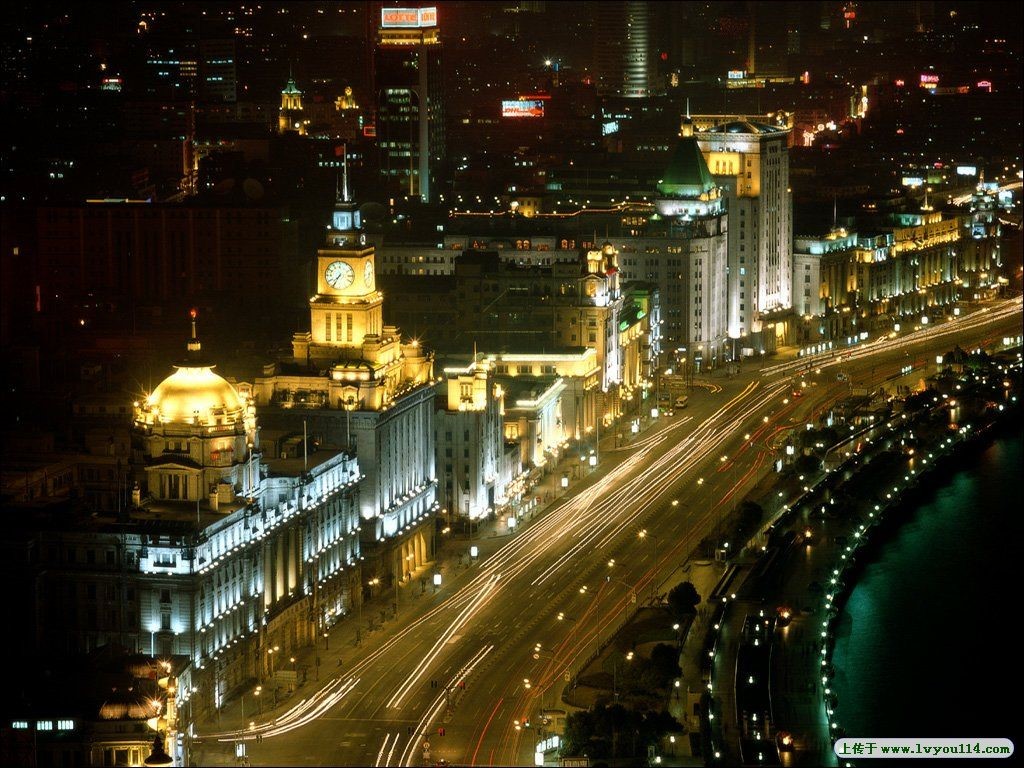
Old City God Temple(城隍庙), is a temple located in Shanghai, China, within the old walled city. First built in the year of Yongle of the Ming Dynasty (1403), it is a major Taoist temple in Shanghai. In the temple are enshrined the City God Qin Yubo and General Huoguang. It was very popular during the Qing Dynasty. Today the "City God Temple" not only refers to the large temple complex, but also the traditional district of commerce in the city, surrounding the temple.
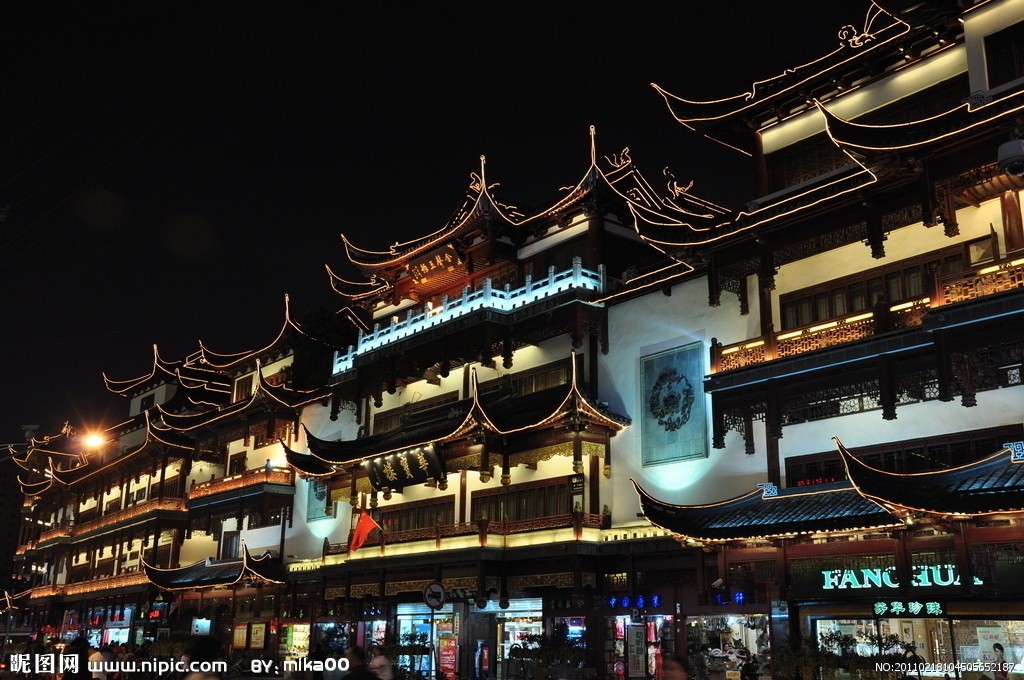
Yuyuan Garden(豫园), is an extensive Chinese garden located beside the City God Temple in the northeast of the Old City of Shanghai, China. A famous classical garden in south China, it was once famed as the “top beauty in southeast China”. First built during the Ming Dynasty, 400 years ago, by a Sichuan minister of finance named Pan Yunduan, it has been several times renovated by the government since the Liberation and is now one of the key relic sites in the country under state protection. The garden is divided into the scenic sections of “Mountains and Forests in the City”, "Magnificent Woods and Beautiful Valleys”, "Historical Relics of Heralding Spring”, "Water and Rockery Scenery”, "Tops in the World” and the Inner Garden.
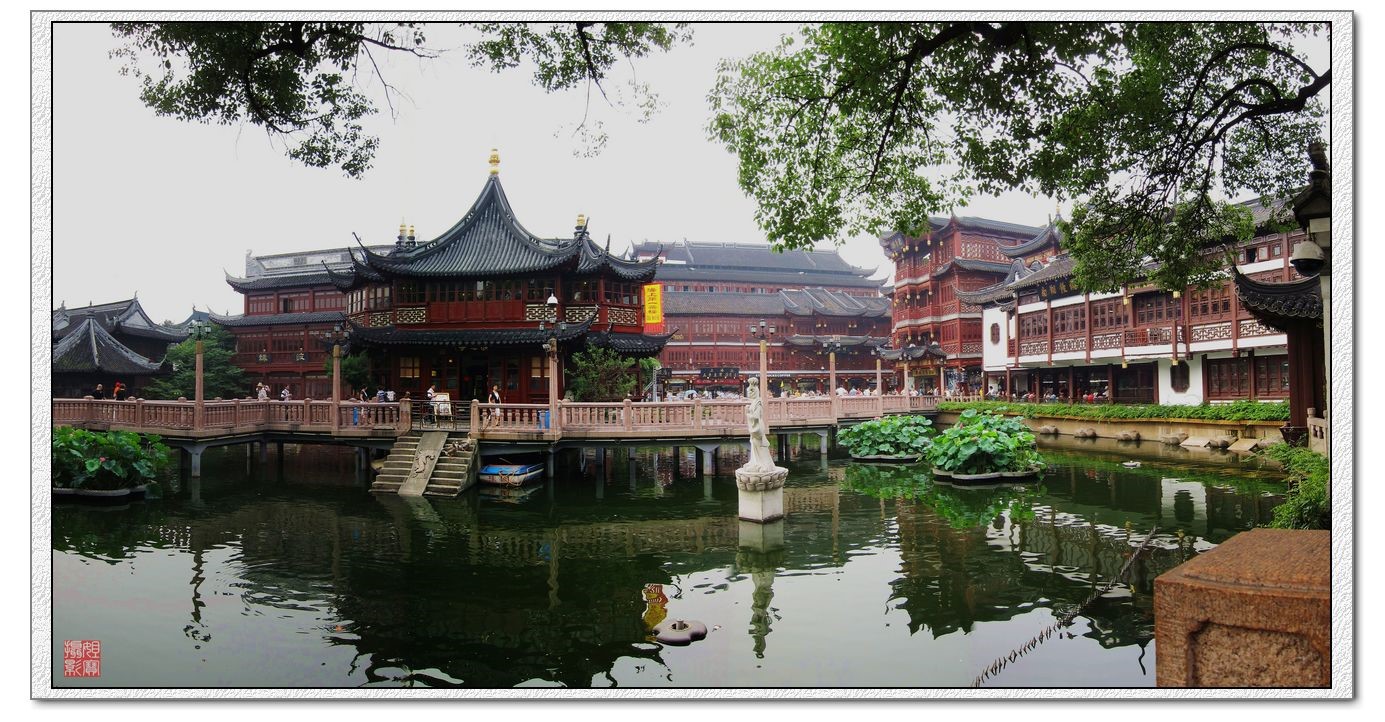
Nanjing Road (南京路) is considered to be the 'No. 1 commercial street in China', which has been a landmark for this city for a long time. Along its 5.5 kilometers, you will find over 600 shops that on average are visited by some 1.7 million people each day. Here, you could purchase everything wanted, spanning from special and cheap souvenirs of Shanghai to the luxurious world famous brands.
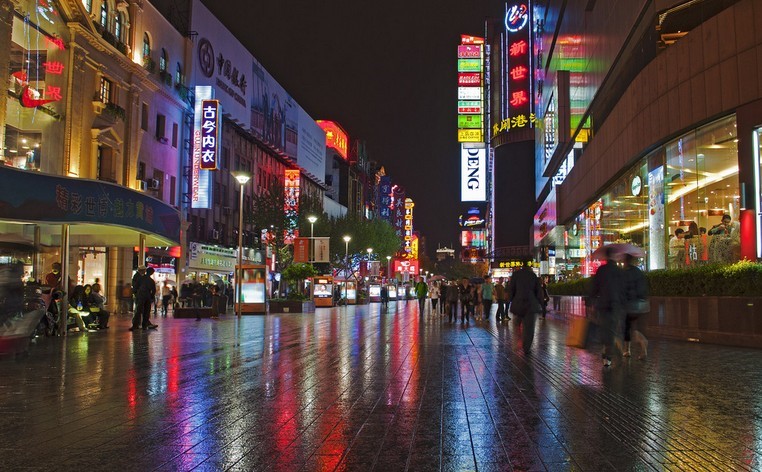
Lujiazui(陆家嘴), is located in the Pudong New District on the eastern bank of Huangpu River. The importance of Lujiazui stems from the fact that it lies directly across the river from the Bund, the old financial and business district of Shanghai. Currently, there are more than 30 skyscrapers with commerce as their leading function, and over 504 domestic and overseas financial and insurance corporations located in Lujiazui. The landmarks include the 468 meters (1,535 feet) high Oriental Pearl TV Tower, the 88-story 420.5 meters high Jinmao Tower, the previous highest roof in China---the 492 meters high Shanghai World Financial Center, and the under-construction 632 meters high Shanghai Center. These main buildings in Lujiazui are now connected by an overpass corridor which is now about 1300 meters long.
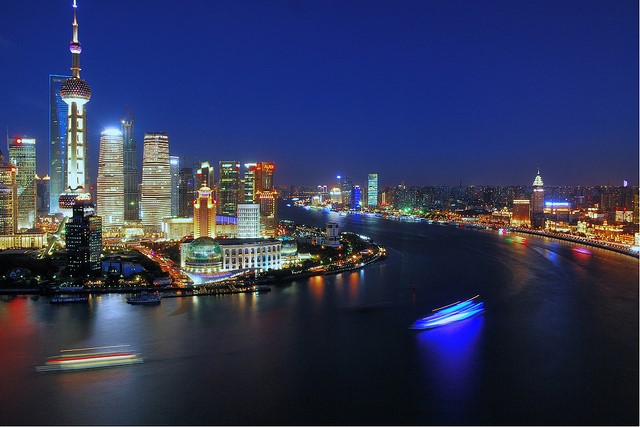
Shanghai Xintiandi(上海新天地) Xintiandi is a car-free shopping, eating and entertainment area of Shanghai. It is composed of an area of restored traditional shikumen ("stone gate") houses on narrow alleys, a modern shopping mall with a cinema complex, and some adjoining houses which now serve as book stores, cafes and restaurants. Most of the cafes and restaurants feature both indoor and outdoor seatings. Xintiandi has an active nightlife on weekdays as well as weekends, though romantic settings are more common than loud music and dance places. Xintiandi means "New Heaven and Earth", and is considered one of the first lifestyle centers in China.
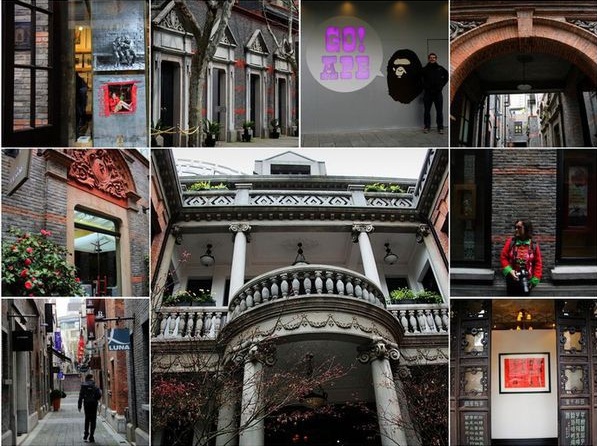
Zhujiajiao (朱家角) Known as the “ Venice in Shanghai ”, it is a well-preserved waterside ancient town. It was already a country fair as early as the Warring States Period, 1,700 years ago. During the Wanli years of the Ming Dynasty (1573-1617), with merchants flocking to the place and a growing population, it had become a prosperous town. There, we can still see the traces of the antique markets and streets of the Ming and Qing Dynasties. The antique buildings and simple life-style of the town's people will give visitors a feeling of peace and rest.
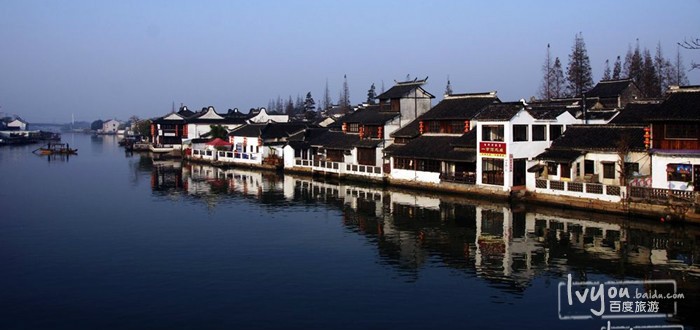
The Huangpu River is 114 kilometers (71miles) long and 400 meters (0.25 miles) wide, originating in Dianshan Lake and flowing into the Yangtze River at Wusongkou (mouth of Wusong River). It provides a nice way to see the Shanghai skyline so, whiy not take a cruise to view the sights away from the hustle and bustle of the crowded streets. The cruise usually starts from the Bund, reaches the Huangpu Bridge and heads back towards Wusongkou before returning to the Bund. You can buy tickets at Shiliupu Ferry Terminal (No. 501, Zhongshan Dong Er Lu) for about it CNY100 per person but, be warned, there can be queues at popluar times.
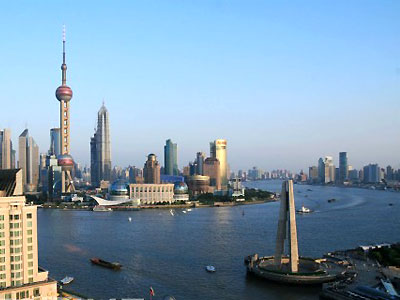
For more information, please visit Official Shanghai China Travel Website.
